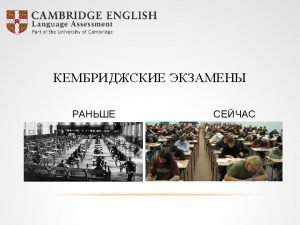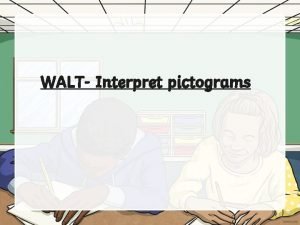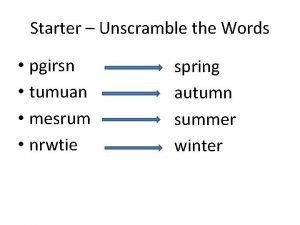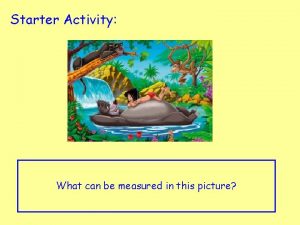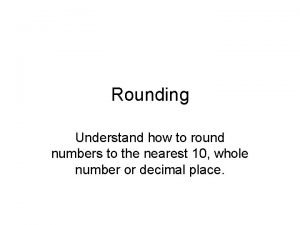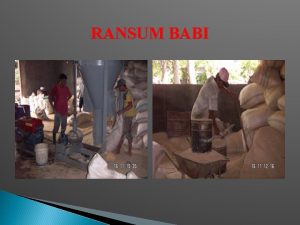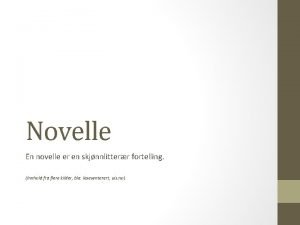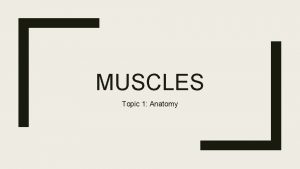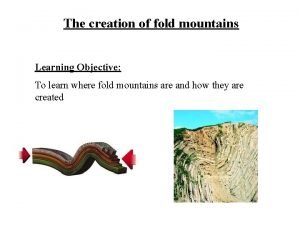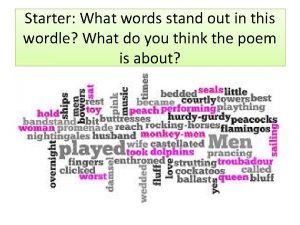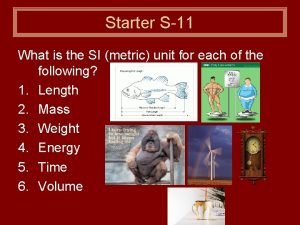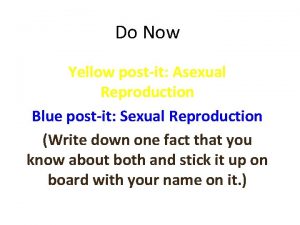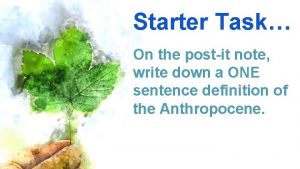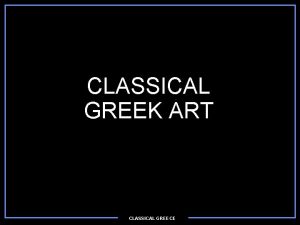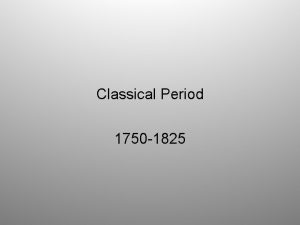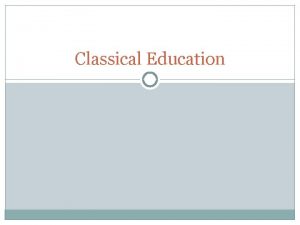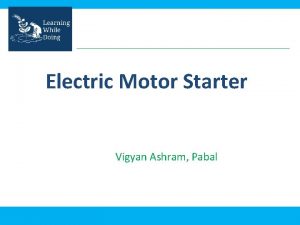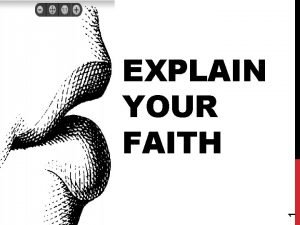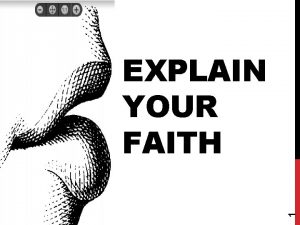Starter On your postit Explain how classical or
























- Slides: 24

Starter • On your post-it… • Explain how classical or operant conditioning explains attachment

Explanations of attachment Bowlby’s Theory Objectives: • To be able to explain Bowlby’s monotropic theory including the critical period an internal working model. • To evaluate Bowlby’s monotropic theory, using research.

Two explanations of attachment That you need to know Learning Theory – Conditioning Bowlby’s Evolutionary Theory Nurture Nature Your behaviour is based on how you were brought up by the people around you Your behaviour is based on your biology. Your behaviour is a result of innate characteristics - survival

• Bowlby rejected the learning theory he said ‘if this were true, an infant of a year or two should take readily to whomever feeds him and this is clearly not the case’

Bowlby’s Theory of Attachment • Bowlby (1958) proposed that human in infants have an innate tendency to form attachments to their primary care giver, most often their mother.

Evolutionary Theory • What is evolution? – Evolution is the process whereby USEFUL FEATURES are introduced into a species. Features are useful if they help the animal SURVIVE long enough to successfully REPRODUCE. To survive and reproduce, animals need to be WELL ADAPTED to their environment. For this reason, useful features are said to be ADAPTIVE.

ASCMI • Bowlby’s theory of attachment has a number of parts, which can be broken down into the following – A: Adaptive – S: Social Releasers – C: Critical Period – M: Monotropy – I: Internal Working model

Bowlby (1958) • Attachments are Adaptive. • This means they give our species an ‘adaptive advantage’, making us more likely to survive. This is because if an infant has an attachment to a caregiver, they are kept safe, given food, and kept warm.

Bowlby (1958) • Babies have Social releasers, which ‘unlock’ the innate tendency of adults to care for them. • These Social releasers are both: – Physical – the typical ‘baby face’ features and body proportions – Behavioural – e. g. crying, cooing

Critical Period • This is the idea that babies must form an attachment within the first 2 years • If they do not achieve this then they will be damaged for life Physically Intellectually Emotionally Socially • Critical period = around 2 years (sensitive period) • A child is maximally sensitive at the age of two but, if an attachment is not formed in this time, a child will find it much harder to form one later.

Social Releasers and the critical period… • Read page 82 • Summarise ‘social releasers’ and the critical period to your partner…

Monotropy • This is the ideas that babies form one special attachment with their mother (monotropic) • Bowlby emphasised the importance of the mother over the father’s role • This special, intense attachment is called monotropy • If the mother isn’t available, the infant could bond with another ever-present, adult, mother-substitute Mono means one – think of monobrow

Monotropy • Law of continuity – more constant and predictable a child’s care, the better quality of attachment • Law of accumulated separation – the effects of every separation from the mother add up • The ‘safest dose is therefore the zero dose’ Mono means one – think of monobrow

Internal Working Model • Infant forms a mental representation of their relationship with their primary caregiver called an internal working model, models future relationships. • Powerful effect on the nature of the child’s future relationships • Loving relationship = loving and reliable relationships later on & bring these qualities to future relationships • Poor relationship = treat others that way or expect to be treated badly.

Internal Working Model • Internal model affects a child’s later ability to be a parent themselves • People base their parenting behaviour on their own experiences of being parented

Internal working model – adult relationships Hazan and Shaver (1987): 620 responses to love quiz asking about 1. Current attachment experiences. 2. Attachment history. 3. Attitudes towards love. Findings: Positive correlation between attachment type + current experiences. Securely attached adults described their relationships as happy, trusting and more enduring (average 10 years compared to 5 or 6 years for insecure).

Evolutionary Theory - Evaluation Complete the love quiz! P – There is evidence that shows the existence of the Internal Working model (continuity hypothesis) E – Hazan and Shaver… and they found… E – This support the existence of the IWM because the attachment types as a baby was found to influence relationships as an adult, which is what Bowlby suggests. (Problem with sample bias) L – Therefore, there is evidence to suggest that…

Evaluation of Bowlby’s Theory (AO 3) • Complete page 22 of your booklet • Work in groups to complete the evaluation points.

Essay Question “Describe and evaluate Bowlby’s monotropic theory of attachment” (12 marks)




Bowlby (1958) • On your handout, draw a simple picture on the front that will help you remember it. • E. g. What is this demonstrating? • MONOTROPY • Come up with a mnemonic that will help you remember the

Plenary • Draw a picture representing the three explanations of Bowlby’s theory of attachment…
 Which is a classical accompaniment of poulet maryland
Which is a classical accompaniment of poulet maryland Give us your hungry your tired your poor
Give us your hungry your tired your poor Starters movers flyers ket pet fce cae
Starters movers flyers ket pet fce cae Pictogram starter
Pictogram starter Reichstag fire who was the fire starter
Reichstag fire who was the fire starter Starter unscramble
Starter unscramble What is directional and non directional hypothesis
What is directional and non directional hypothesis Starter background
Starter background Starter activity clipart
Starter activity clipart Starter activity
Starter activity Solving equations starter
Solving equations starter Rounding starter
Rounding starter What does romeo overhear juliet saying
What does romeo overhear juliet saying L=8
L=8 Formulasi pakan babi
Formulasi pakan babi Virkemidler i noveller
Virkemidler i noveller Starter which muscles do you already know
Starter which muscles do you already know Midlife crisis starter pack
Midlife crisis starter pack Biological ennoblement
Biological ennoblement When the starter is bent upward into simple upfold called
When the starter is bent upward into simple upfold called Starter words for wordle
Starter words for wordle Nth term starter
Nth term starter Good morning period
Good morning period Good morning starter
Good morning starter Starter s11
Starter s11


